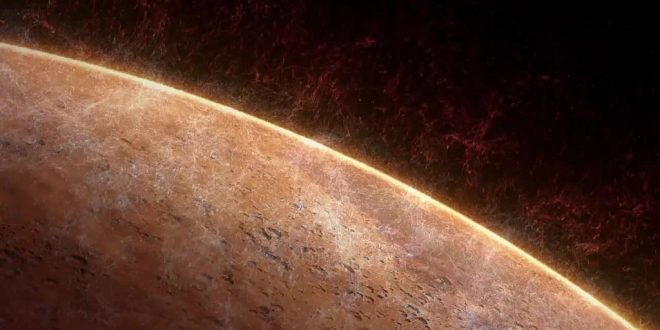Mars’ liquid water may have had an atmospheric ‘escape route’, says new research.
The early Martian atmosphere likely didn’t contain enough carbon dioxide to keep the planet warm enough for liquid water, according to National Aeronautics and Space Administration researchers.
“A higher carbon dioxide pressure in the atmosphere of early Mars could have provided a greenhouse effect with the magnitude required to warm the surface of the planet over the freezing point of water,” said Cornell astronomer Alberto Fairen, a member of the NASA research team that has published “Low Hesperian P CO2 Constrained From In Situ Mineralogical Analysis at Gale Crater, Mars,” in the Proceedings of the National Academy of Science, Feb. 6.
Researchers can’t quite reconcile the carbon dioxide amounts on Mars today from epochs gone by.
“We know that liquid water was flowing and ponding on Mars at that time, as confirmed by Curiosity investigations and other previous and current missions,” said Fairen, a Cornell visiting astronomer from Spain’s Center for Astrobiology. “But our results pose a very interesting conundrum. That’s science – a series of questions, not a catalog of answers.”
About the absence of carbonate in sedimentary rock at Gale Crater the rover has examined, “We’ve been particularly struck,” said lead author Thomas Bristow of NASA’s Ames Research Center in California and principal investigator for the chemistry and mineralogy (CheMin) instrument on Curiosity. “It would be really hard to get liquid water even if there were a hundred times more carbon dioxide in the atmosphere than what the mineral evidence in the rock tells us.”
In water, carbon dioxide combines with positively charged ions – such as magnesium and ferrous iron – to form carbonate, according to NASA. The CheMin instrument found other minerals in the same rocks, indicating those ions were readily available and the other minerals, such as magnetite and clay minerals, suggest that subsequent Martian conditions never became acidic enough for carbonates to dissolve, as they can in acidic groundwater on Earth.
Additionally, the new NASA study found only tens of millibars (one one-thousandth of sea-level air pressure on Earth) of carbon dioxide present when the lake at Gale Crater existed. If this amount led to the formation of carbonates, they would be virtually imperceptible to the CheMin instrument. The red planet’s current atmosphere is less than 10 millibars of pressure and mostly carbon dioxide.
If there wasn’t enough carbon dioxide on Mars about 3.5 billion years ago, what could have melted the ice enough to make liquid water flow? “We still don’t know,” said Fairen.
“It is possible that our climate models are still incomplete and we are missing some pieces of a model to fully understand the puzzle,” said Fairen. “Maybe other gases were present in the atmosphere, capable of providing similar effects to carbon dioxide. Or perhaps the climate was actually cold and the hydrological cycle was similar to that in the polar regions of Earth today.”
Agencies/Canadajournal
 Canada Journal – News of the World Articles and videos to bring you the biggest Canadian news stories from across the country every day
Canada Journal – News of the World Articles and videos to bring you the biggest Canadian news stories from across the country every day



